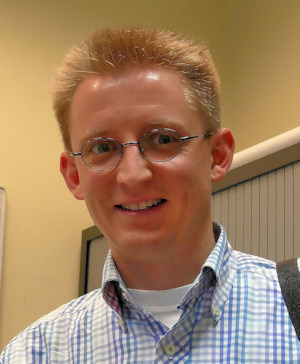
When: 21 October 2020 at 13:00
Where: onlin (see below)
Title : Upscaling Multiphase Flow from Pore to Darcy Scale – From a geometric state function of capillarity to a generalized description of wetting
Speaker: Dr. Steffen Berg
Affiliation: Shell Global Solutions International B.V., Amsterdam, The Netherlands
Abstract:
At the Darcy scale many parameters describing multiphase flow in porous media are hysteretic, such as the capillary pressure and relative permeability saturation functions. In particular for the capillary pressure-saturation function the source of the hysteresis has been an open question in many disciplines such as petroleum engineering and hydrology.
Synchrotron beamline based fast X-ray computed micro-tomography has led to the insight that topological changes are the source of the hysteresis. Via an extensive set of 2-phase lattice Boltzmann simulations, which are validated against experimental data from synchrotron beamline micro-CT flow experiments, it was demonstrated that the capillary pressure hysteresis is only apparent and a consequence of an incomplete set of state variables. The state of the system is represented by the pore scale fluid distribution, meaning a geometrical shape in three dimensions, which mathematically proven by Hadwiger’s theorem can be fully parameterized by the 4 Minkowski functionals which are (1) volume or saturation, (2) interfacial area, (3) mean curvature which is related by the interfacial tension to capillary pressure, and (4) the integral Gaussian curvature which is related via the Gauss-Bonnet theorem to the Euler characteristic.
For systems with partial wetting, the Gauss-Bonnet theorem includes the additional geodesic curvature term, which can be interpreted as deficit curvature and related to contact angle. In systems with strong contact angle hysteresis this approach gives access to the intrinsic contact angle. Under equilibrium conditions Young’s equation for contact angle can be derived from this topological description is a universal formulation and Young’s equation.
References:
- E. McClure, R. T. Armstrong, M. A. Berrill, S. Schlüter, S. Berg, W. G. Gray, C. T. Miller, A geometric state function for two-fluid flow in porous media, Phys. Rev. Fluids 3(8), 084306, 2018.
- T. Armstrong, J. E. McClure, V. Robins, Z. Liu, C. H. Arns, S. Schlüter, S. Berg, Porous Media Characterization Using Minkowski Functionals: Theories, Applications and Future Directions, Transport in Porous Media, 2018 in press doi:10.1007/s11242-018-1201-4
- Schlüter, S. Berg, M. Rücker, R. T. Armstrong, H.-J. Vogel, R. Hilfer and D. Wildenschild , Pore scale displacement mechanisms as a source of hysteresis for two-phase flow in porous media, Water Resources Research 52(3), 2194-2205, 2016.
- Sun, J. E. McClure, P. Mostaghimi, A. L. Herring, S. Berg, R. T. Armstrong, Probing Effective Wetting in Subsurface Systems, Geophysical Research Letters 47(5), 1-9, 2020.
- Sun, J. E. McClure, P. Mostaghimi, A. L. Herring, D. E. Meisenheimer, D. Wildenschild, S. Berg, R. T. Armstrong, Characterization of wetting using topological principles, Journal of Colloid and Interface Science 578, 106-115, 2020.
Join Zoom Meeting
https://NTNU.zoom.us/j/92982442192?pwd=UGNiZ3kveDRJb3JzdlVyc0puRXkrZz09
Meeting ID: 929 8244 2192
Passcode: 876212
Join by SIP
Join by H.323
162.255.37.11 (US West)
162.255.36.11 (US East)
115.114.131.7 (India Mumbai)
115.114.115.7 (India Hyderabad)
213.19.144.110 (Amsterdam Netherlands)
213.244.140.110 (Germany)
103.122.166.55 (Australia)
149.137.40.110 (Singapore)
64.211.144.160 (Brazil)
69.174.57.160 (Canada)
207.226.132.110 (Japan)
Meeting ID: 929 8244 2192
Passcode: 876212
Join by Skype for Business
